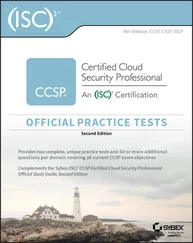In 2012, Windows 8 added dynamic access control which lets you control user access by context, such as their work PC versus their home PC and their phone; this is done via account attributes in Active Directory, which appear as claims about a user, or in Kerberos tickets as claims about a domain. In 2016, Windows 8.1 added a cleaner abstraction with principals , which can be a user, computer, process or thread running in a security context or a group to which such a principal belongs, and security identifiers (SIDs), which represent such principals. When a user signs in, they get tickets with the SIDs to which they belong. Windows 8.1 also prepared for the move to cloud computing by adding Microsoft accounts (formerly LiveID), whereby a user signs in to a Microsoft cloud service rather than to a local server. Where credentials are stored locally, it protects them using virtualisation. Finally, Windows 10 added a number of features to support the move to cloud computing with a diversity of client devices, ranging from certificate pinning (which we'll discuss in the chapter on Network Security) to the abolition of the old secure attention sequence ctrl-alt-del (which is hard to do on touch-screen devices and which users didn't understand anyway).
To sum up, Windows evolved to provide a richer and more flexible set of access control tools than any system previously sold in mass markets. It was driven by corporate customers who need to manage tens of thousands of staff performing hundreds of different job roles across hundreds of different sites, providing internal controls to limit the damage that can be done by small numbers of dishonest staff or infected machines. (How such controls are actually designed will be our topic in the chapter on Banking and Bookkeeping.) The driver for this development was the fact that Microsoft made over half of its revenue from firms that licensed more than 25,000 seats; but the cost of the flexibility that corporate customers demanded is complexity. Setting up access control for a big Windows shop is a highly skilled job.
Doing access control at the level of files and programs was fine in the early days of computing, when these were the resources that mattered. Since the 1980s, growing scale and complexity has led to access control being done at other levels instead of (or as well as) at the operating system level. For example, bookkeeping systems often run on top of a database product such as Oracle, which looks to the operating system as one large file. So most of the access control has to be done in the database; all the operating system supplies may be an authenticated ID for each user who logs on. And since the 1990s, a lot of the work at the client end has been done by the web browser.
6.2.10.1 Database access controls
Before people started using websites for shopping, database security was largely a back-room concern. But enterprises now have critical databases to handle inventory, dispatch and e-commerce, fronted by web servers that pass transactions to the databases directly. These databases now contain much of the data that matter to our lives – bank accounts, vehicle registrations and employment records – and failures sometimes expose them to random online users.
Database products, such as Oracle, DB2 and MySQL, have their own access control mechanisms, which are modelled on operating-system mechanisms, with privileges typically available for both users and objects (so the mechanisms are a mixture of access control lists and capabilities). However, the typical database access control architecture is comparable in complexity with Windows; modern databases are intrinsically complex, as are the things they support – typically business processes involving higher levels of abstraction than files or domains. There may be access controls aimed at preventing any user learning too much about too many customers; these tend to be stateful, and may deal with possible statistical inference rather than simple yes-no access rules. I devote a whole chapter in Part 2to exploring the topic of Inference Control.
Ease of administration is often a bottleneck. In companies I've advised, the operating-system and database access controls have been managed by different departments, which don't talk to each other; and often IT departments have to put in crude hacks to make the various access control systems seem to work as one, but which open up serious holes.
Some products let developers bypass operating-system controls. For example, Oracle has both operating system accounts (whose users must be authenticated externally by the platform) and database accounts (whose users are authenticated directly by the Oracle software). It is often convenient to use the latter, to save the effort of synchronising with what other departments are doing. In many installations, the database is accessible directly from the outside; and even where it's shielded by a web service front-end, this often contains loopholes that let SQL code be inserted into the database.
Database security failures can thus cause problems directly. The Slammer worm in 2003 propagated itself using a stack-overflow exploit against Microsoft SQL Server 2000 and created large amounts of traffic as compromised machines sent floods of attack packets to random IP addresses.
Just as Windows is tricky to configure securely, because it's so complicated, the same goes for the typical database system. If you ever have to lock one down – or even just understand what's going on – you had better read a specialist textbook, such as [1175], or get in an expert.
The web browser is another middleware platform on which we rely for access control and whose complexity often lets us down. The main access control rule is the same-origin policy whereby JavaScript or other active content on a web page is only allowed to communicate with the IP address that it originally came from; such code is run in a sandbox to prevent it altering the host system, as I'll describe in the next section. But many things can go wrong.
In previous editions of this book, we considered web security to be a matter of how the servers were configured, and whether this led to cross-site vulnerabilities. For example a malicious website can include links or form buttons aimed at creating a particular side-effect:
https://mybank.com/transfer.cgi?amount=10000USD&recipient=thief
The idea is that if a user clicks on this who is logged into mybank.com, there may be a risk that the transaction will be executed, as there's a valid session cookie. So payment websites deploy countermeasures such as using short-lived sessions and an anti-CSRF token (an invisible MAC of the session cookie), and checking the Referer:header. There are also issues around web authentication mechanisms; I described OAuth briefly in section 4.7.4. If you design web pages for a living you had better understand the mechanics of all this in rather more detail (see for example [120]); but many developers don't take enough care. For example, as I write in 2020, Amazon Alexa has just turned out to have a misconfigured policy on cross-origin resource sharing, which meant that anyone who compromised another Amazon subdomain could replace the skills on a target Alexa with malicious ones [1483].
By now there's a realisation that we should probably have treated browsers as access control devices all along. After all, the browser is the place on your laptop were you run code written by people you don't want to trust and who will occasionally be malicious; as we discussed earlier, mobile-phone operating systems run different apps as different users to give even more robust protection. Even in the absence of malice, you don't want to have to reboot your browser if it hangs because of a script in one of the tabs. (Chrome tries to ensure this by running each tab in a separate operating-system process.)
Читать дальше











